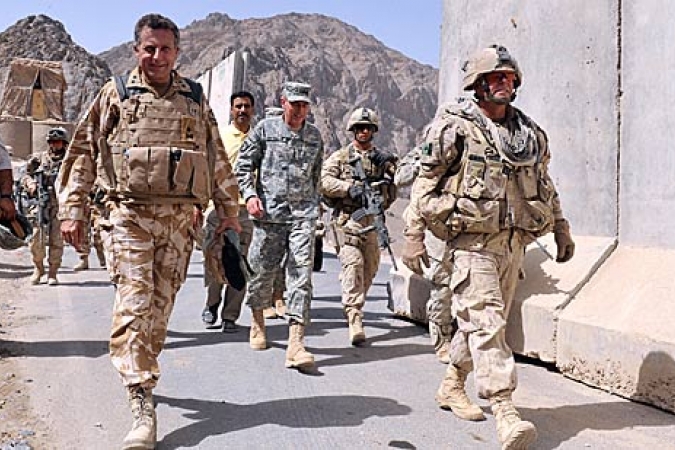Roundup
A major new scientific study has confirmed growing conviction that the world's most widely used chemical herbicide,
Monsanto Corporation's Roundup is toxic and a danger to human as well as animal organisms.
The latest scientific research carried out by a multinational scientific team headed by Professor Andrés Carrasco, head of the Laboratory of Molecular Embryology at the University of Buenos Aires Medical School and member of Argentina's National Council of Scientific and Technical Research, presents alarming demonstration that Monsanto and the GMO agribusiness industry have systematically lied about the safety of their Roundup.
Roundup in far lower concentrations than used in agriculture is linked to birth defects.
The health implications are huge. All major GMO crops on the market today are genetically manipulated to "tolerate" the herbicide Roundup.
Glyphosate was patented by Monsanto in the 1970's well before GMO was commercialized, as a so-called broad-spectrum weed killer. It is typically sprayed and absorbed through the leaves, or used as a forestry herbicide. It was initially patented and sold by Monsanto under the trade name Roundup, which also contains non-disclosed added chemicals the company refuses to divulge for "trade secret" reasons. As of 2005, 87% of all US soybean fields were planted with glyphosate-resistant varieties of GMO soybeans and sprayed with Roundup.
Because the seeds of Monsanto Roundup Ready GMO soybeans or other crops have been manipulated solely to be "resistant" to Roundup herbicide, while all other plant life in the field is killed by Roundup, farmers using Roundup Ready seeds must also purchase Roundup herbicide, making a captive market for both seed and chemicals.
The problem with this cozy arrangement, aside from the fact that Roundup-resistant "super-weeds" are emerging as a new biological catastrophe, is that Glyphosate has now been demonstrated to be linked to birth defects as one of the most highly toxic substances in agriculture . . .
Källa: F. William Engdahl [sept 2010]
A new memo leaked to the British media last week asserts that George Bush and Tony Blair agreed in January 2003 to go to war in Iraq--not March 2003, as they insist. It also suggests that the leaders knew there was no legitimate case for war, and that Blair told Bush that he was "solidly" behind US plans to invade Iraq before he sought advice about the invasion's legality. Most shocking, it reveals that Bush was so desperate to provoke a war that he proposed painting US planes to look like UN aircrafts and flying them low over Iraq in hopes of inciting an Iraqi attack. (Bush to Blair: "The US was thinking of flying U2 reconnaissance aircraft with fighter cover over Iraq, painted in UN colours. If Saddam fired on them, he would be in breach.")
[...] Which gets us back to the question: What's
the endgame of the surge-and-negotiate strategy?
Already there is plenty of negotiating behind the scenes. Karzai
has an ongoing dialogue with the Taliban, with former Taliban
allies in Saudi Arabia and Pakistan mediating, and there are
reports of talks involving Hekmatyar, too. But Obama's advisers
are split on whether those top-down negotiations will work: Some
suspect that there can be no deal as long as the Taliban think
they're winning.
An alternative approach gaining favor inside the beltway is
bottom-up negotiations to mirror the Taliban's village-by-village
strategy. "This is a country that historically has had very
little central government," General David McKiernan, the US
commander, said last November. "But it's a government with a
history of local autonomy and local tribal authority systems."
Jones, of Rand, says the key is winning the loyalty of rural
Afghans. If it's done right—if America maintains a light
footprint, if tribal leaders see improvements in security (as
well as cold, hard cash), and if Afghanistan's meddling neighbors
can be persuaded to help stabilize the country—then the
loyalties of the Pashtun tribes may turn. If that happens, Jones
says hopefully, "They can tip pretty quickly." Of course, if the
surge causes more civilian deaths and further inflames anger at
the United States, they could just as easily tip the other way.
Therein lies the great risk of Obama's gamble.
Robert Dreyfuss has written for The Nation, Washington Monthly, and Rolling Stone, and is the author of Devil's Game: How the United States Helped Unleash Fundamentalist Islam.
€€
Kabul
Kabul ovan, Helt klart en tänkvärd film...


Det ser ut som ockupation av ett land. Det är en militär ockupation!
- Durandlinjen
- Irak ett land
- Sony om - Lawrence of Arabia
